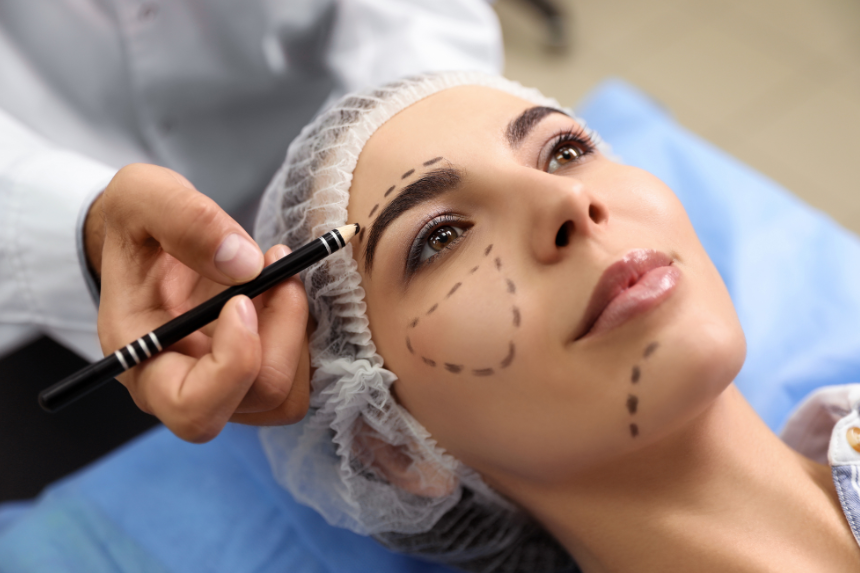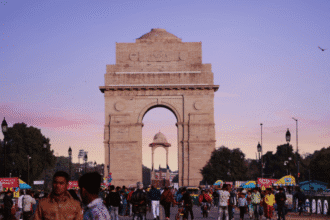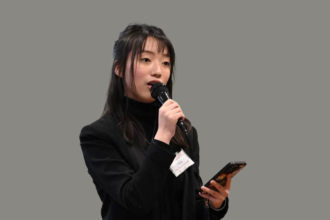Cosmetic surgery in China has seen explosive growth over the last two decades. As the country experiences a rise in disposable incomes, coupled with significant shifts in societal beauty standards, more people are opting for cosmetic enhancements. Cosmetic surgery trends in China are not only changing how people look but also influencing social dynamics, particularly for young women. This blog explores the evolving trends, the influence of social media, the risks involved, and what the future holds for cosmetic surgery in China.
How Have Cosmetic Surgery Trends in China Evolved?
The growth of cosmetic surgery trends in China can be traced back to the late 20th century, when procedures like double eyelid surgery, rhinoplasty (nose reshaping), and jawline contouring became increasingly popular. These surgeries aimed at achieving a look that aligned with Western beauty ideals, which many Chinese women aspired to. Over time, however, the trends have shifted toward more extreme and specific procedures, influenced by the changing nature of beauty standards.
In recent years, the focus has moved toward creating an even more youthful and delicate appearance. Procedures aimed at achieving a “baby face” look are gaining momentum. This includes surgeries to make the face appear smaller, eyes wider, and features more exaggeratedly feminine. For instance, eyelid surgery has evolved from simply creating a double eyelid to creating a more “open” look that mimics the big eyes seen in anime characters.
Cosmetic surgery trends in China are increasingly driven by popular culture, particularly K-pop and anime, with young Chinese women adopting these foreign beauty ideals. Social media platforms such as Weibo and Instagram, along with beauty apps like SoYoung, have contributed to the rapid spread of these beauty standards. The beauty of these platforms is that they allow people to document their transformations, which encourages others to follow suit.
What Factors Are Contributing to the Surge in Cosmetic Surgery in China?
The surge in cosmetic surgery trends in China can be attributed to several factors. First and foremost, the changing perception of beauty in China has created a competitive environment. In many sectors, particularly entertainment and media, a person’s appearance can directly impact their career prospects. The pressure to conform to these beauty standards is immense, particularly for young women, who are expected to maintain a youthful, flawless appearance in the public eye.
Moreover, social media has been a driving force in reshaping the landscape of cosmetic surgery. Platforms like Weibo, Douyin (the Chinese version of TikTok), and Xiaohongshu (Little Red Book) feature a constant stream of beauty influencers and celebrities sharing their before-and-after surgery transformations. This has made cosmetic surgery more mainstream, turning it into a status symbol and an expression of self-improvement.
Another reason behind the popularity of cosmetic surgery is the accessibility of advanced medical technologies. With innovations in non-invasive procedures like Botox, fillers, and laser treatments, people can achieve their desired appearance with minimal downtime. These less invasive treatments are appealing to those who wish to enhance their features without undergoing full-scale surgeries. Thus, cosmetic surgery trends in China are not only about invasive surgeries but also about quick fixes that provide instant gratification.
What Are the Risks of Cosmetic Surgery in China?
While the growing demand for cosmetic surgery trends in China reflects a desire for beauty and self-improvement, it also raises safety concerns. The rapid expansion of cosmetic surgery clinics, many of which are unlicensed, poses significant risks. According to reports, many individuals have fallen victim to botched surgeries performed by unqualified practitioners.
One of the main risks associated with the rise of cosmetic surgery is the proliferation of unlicensed clinics. Due to the high demand for these procedures, some clinics operate without proper oversight or qualified surgeons. This often results in poor surgical outcomes, such as infections, disfigurement, and even life-threatening complications. Many of these clinics do not adhere to proper sanitation standards or safety regulations, making the risk of infection and other health issues even greater.
In addition to unlicensed clinics, the pressure to maintain perfection through constant procedures can have long-term effects on individuals. Some people, like Abby Wu, who is an influential figure in China’s cosmetic surgery community, undergo multiple surgeries to meet their evolving beauty standards. However, the constant alterations to one’s face and body can result in physical consequences, such as scarring, tissue damage, or a distorted appearance. Cosmetic surgery trends in China have led to some people developing unrealistic expectations, which can affect their mental health.
While the Chinese government has made efforts to regulate the cosmetic surgery industry, the sheer volume of unlicensed clinics and poorly trained practitioners still presents a major problem. The lack of consistent enforcement means that patients often have to rely on word-of-mouth recommendations or online reviews to choose their clinics, which can sometimes be misleading. Why Do Some Seasons See More HMPV Infections? This question may be more relevant than it seems, as the seasonal impacts on immune systems and health can also affect the safety of medical procedures during different times of the year.”
How Are Cosmetic Surgery Apps Impacting Beauty Trends in China?
Technology has played a pivotal role in shaping cosmetic surgery trends in China, especially with the rise of beauty and cosmetic surgery apps. These apps, such as SoYoung and GengMei, use artificial intelligence to scan a user’s face and recommend procedures to enhance their appearance. The “magic mirror” feature, which offers personalized surgery recommendations, has become increasingly popular. However, these apps often point out “imperfections,” even for people who are already considered attractive by societal standards.
The prevalence of such apps is helping to normalize the idea of cosmetic surgery. They encourage users to pursue procedures by presenting them with potential “flaws” and offering immediate solutions. Additionally, social media influencers and celebrities often promote these apps, which further fuels the desire for cosmetic enhancements. In some cases, individuals are convinced to undergo procedures based on these app-generated recommendations, even if they have no real need for them.
The use of these apps has become a double-edged sword. On one hand, they provide users with more information and convenience, but on the other hand, they contribute to the creation of unrealistic beauty standards that many feel compelled to meet.
What Is the Future of Cosmetic Surgery Trends in China?
The future of cosmetic surgery trends in China appears bright, but with it comes an increasing need for regulation and ethical standards. As more people seek cosmetic enhancements, the demand for qualified, licensed professionals will continue to rise. Authorities in China have recognized the need for stronger oversight, and measures are being taken to curb the number of unlicensed clinics operating in the country.
Additionally, as people become more aware of the risks associated with unregulated procedures, there is likely to be a shift toward more responsible and informed decision-making. Consumers may start to focus on safety and quality, rather than just the price tag or the allure of a quick transformation.
The growing trend of non-invasive procedures will likely continue to evolve, with advancements in technology making these procedures safer, more effective, and less expensive. As the technology improves, it will be interesting to see how cosmetic surgery trends in China balance between innovation and safety.








